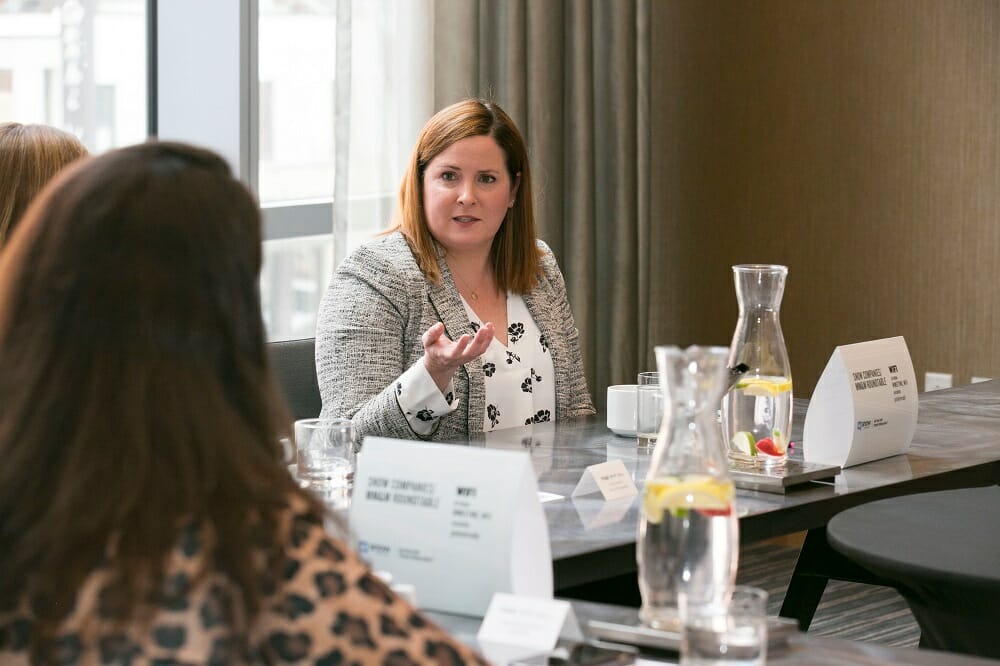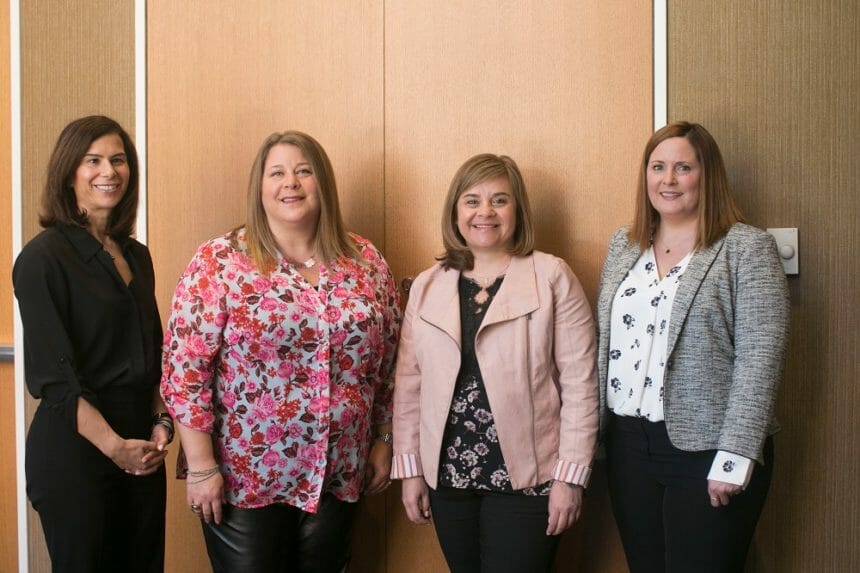When is the right time and the right way to engage with patients? How do clinical, advocacy and marketing teams work hand in hand to build on the patient voice? These were the questions posed to a panel of pharma marketers and seasoned industry experts at MM&M and Snow Companies’ recent roundtable discussion in Boston.
While advocacy groups, patient leadership councils and clinical key opinion leaders were all highlighted as essential components for creating the best possible clinical environment, this group of experts agreed that patient input is essential.
Nadine McGowan, EVP of Snow Companies, said she has noticed a recent shift by many companies toward a more patient-centric approach much earlier in the product lifecycle.
“We need too think about how to best serve
patients, by asking ourselves questions like, ‘How can you get to a center of
excellence? What does that look like? What kind of care do you need to be able
to make that happen?’” McGowan explained.
Lyndi Hirsch, senior director of consumer marketing at Dermira, said her company has had tremendous success capturing the “patient voice” when they engage with patients earlier in the process.
“The most successful campaigns I’ve worked on are those truly immersed in patient insights,” she said. The consistent feedback that we’ve received about these campaigns (branded and unbranded) from patients is, ‘You really hear us. You understand us. That’s me. That is exactly me.’”
Becky Terry, senior product manager of consumer marketing at Sage Therapeutics, agreed, noting that patient involvement can sometimes diffuse potential hurdles down the road when it is incorporated early on in a launch.
“When you run into those hiccups that are going to be burdens of care or are going to make things difficult for the patient, and you have not taken the time to infuse those patient insights, that’s going to make it very difficult and sometimes insurmountable to be able to get patients access to these drugs,” she said.

Patient involvement is undoubtedly key, but getting patients on board can sometimes prove problematic, especially when dealing with a highly stigmatized disease, noted Terry. It can be difficult to get people to “raise their hands and speak up,” she shared.
Partnerships are one way to build trust within the patient community and encourage patient engagement, according to Erika Escartin, director of corporate communications at Akcea Therapeutics.
“Creating strong relationships is so important for creating trust between these organizations and the patients living with a rare disease because oftentimes they feel isolated or alone,” she said. “That is not just a concern for when you already have a product, but also early in the life cycle: When setting up a clinical trial or endpoints for a trial, we must give patients and caregivers an opportunity to contribute their perspective, so that relevant data is not missed, such as quality of life indicators.”
Social media is playing an important role in building patient communities by providing platforms that connect patients to a wealth of information and, most importantly, to each other. “The reality is that people want information the way they consume it,” noted Hirsch, “in the most seamless way possible.”
However, with that type of open sharing platform comes potential legal and regulatory hurdles that can make being a “fast follower” rather than a “pioneer” the safer choice, she added. If companies aren’t using social platforms the way they were built, namely for interaction, then they may end up with just another webpage, she emphasized.
“Everyone is wary of an environment where they’re not that comfortable, where it’s ever-changing and can’t be monitored as easily as if someone was calling or responding to their doctor’s offices,” Hirsch continued. “We’re all scared of the comments, because you never know what the outliers will be, but if we’re not using the tools the way they were built, then what’s the point?”
Terry agreed, stating that as an industry, “We want to be innovative, but we’re still hesitant to go where our consumers are. The millennial generation are becoming the caregivers now and the disease states are impacting younger and younger generations, so if we can’t innovate and invest and get more comfortable being there, then we are going to fall behind.”
Skirting that line can be particularly challenging, Escartin noted, when dealing with a drug containing a black box warning. “You have to be very creative with how you approach social media because there are rules around when and in which context and with which warnings and precautions you can say the product name,” she said. “The best thing you can do is get all the decision makers on board with the pull through and execution of the campaign.”
Hirsch noted that social influencers and ambassadors have also become an integral part of disease education and pharma campaigns, prompting a new set of guidelines from the FDA. “Finding good examples in our industry to get people comfortable is a challenge,” she said.
McGowan added that she’s dealt with confusion from pharma clients on the different categories and lanes social influencers fall into. “It’s difficult because there are ambassadors, our typical patient population who speak about disease education or talk promotionally about the brand. There are patient opinion leaders, who have a following and are living with the disease. Finally, there are the influencers who may or may not be living with the disease, but either way have a community.”
Escartin shared that her company has chosen to involve ambassadors in as many ways as possible and to conduct ambassador programs within both their branded and unbranded campaigns, as they can be held to the same standards and regulations as those in a KOL speaker program.
“The impact that a patient ambassador can bring to the table is inspirational and profound,” she said. “Patient ambassadors can bring a unique perspective to talk about their challenges and burden of living with a rare disease and provide the patient voice to both internal and external audiences.”
The group touched on some of the potential pitfalls of influencer marketing, including missing the mark with your audience by failing to bring an authentic voice on board, whether by using a celebrity spokesperson with no true connection to the community, or coming across as too commercial. It’s a “very fine line,” Terry noted.
“Sometimes it works extremely well,” she said, “but you always run the risk of that person doing one thing wrong and potentially exposing your brand to an area that you don’t want it in. You also never want to look like the company is influencing what that person is trying to say to the community.”
“Making ambassadors an extension of the company can work very well,” Terry continued. “If they feel like they’re part of the team, then they become more comfortable sharing their story. That courage to tell their story and then partner with local foundations or find people on their own time that they can help, it’s pretty incredible to see the power that has.”
Hirsch agreed that embracing ambassadors as “part of the family,” helps bring a level of authenticity to a campaign that it might not otherwise achieve.
“Any person who is willing to share their story and experiences, to help themselves or another person, is someone we feel personally responsible for,” she said. “We own that, and we want them to have that ownership of this, too. Working with people who are willing to do that while bringing a level of sincerity and authenticity to the experience is so valuable when you’re looking to support a patient community.”








